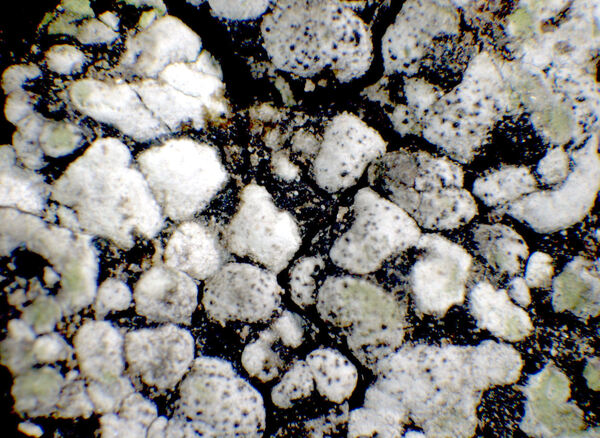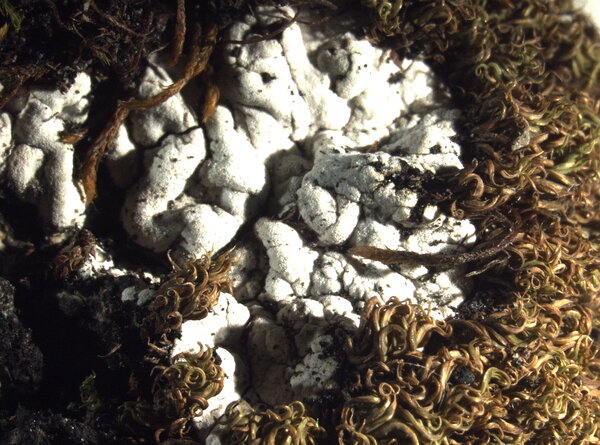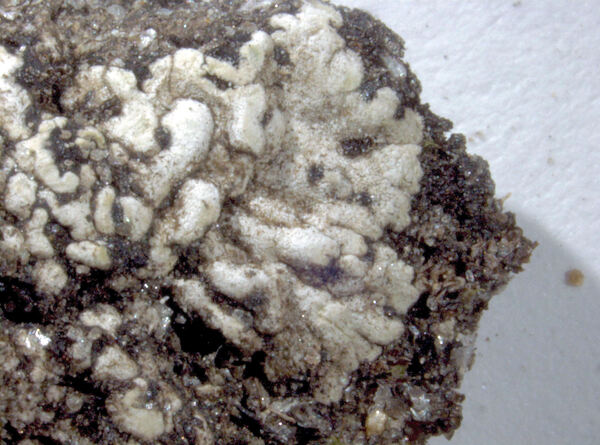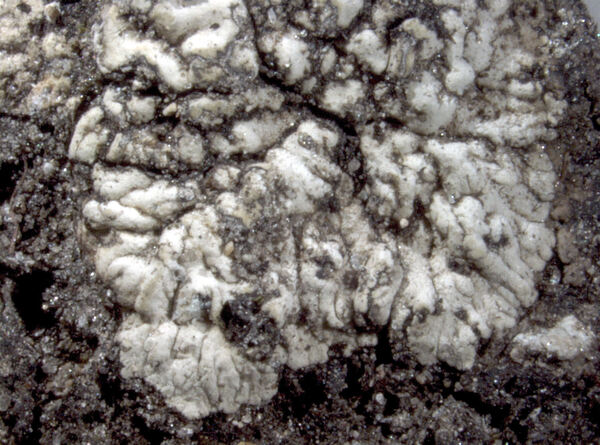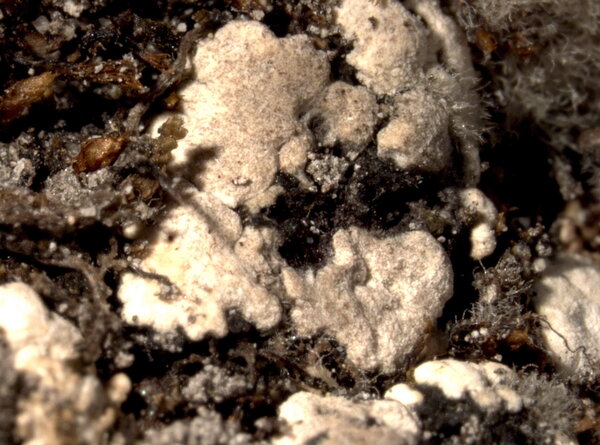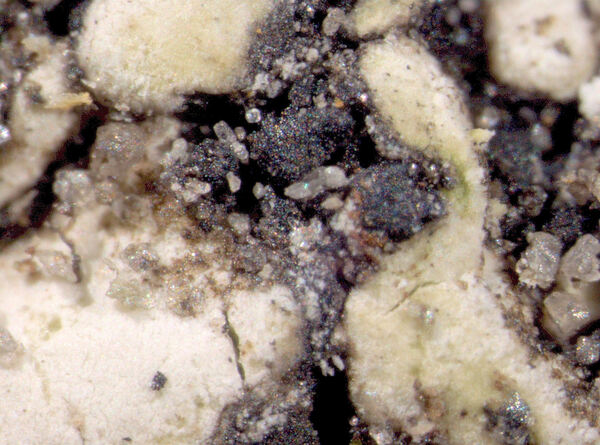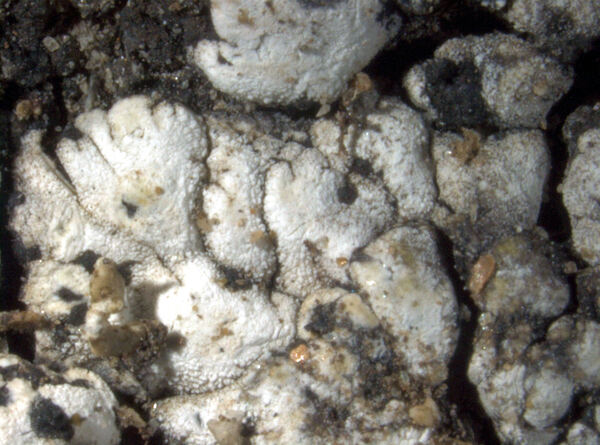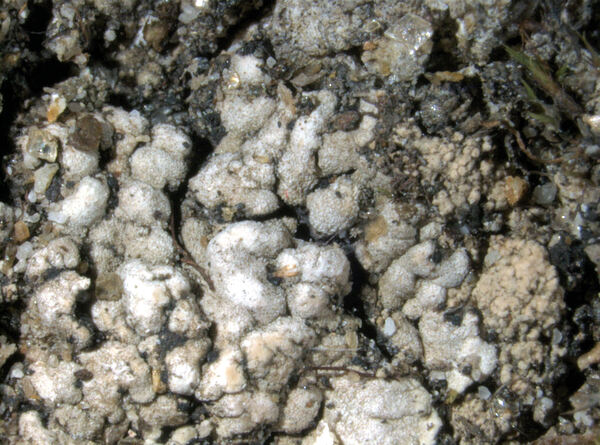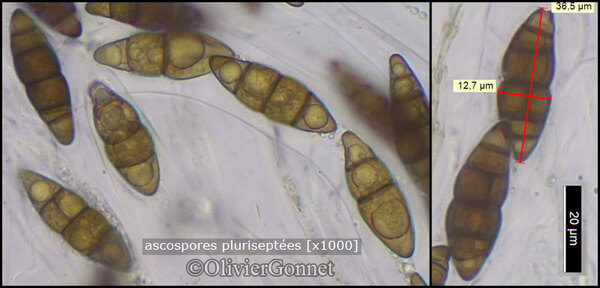Dacampia hookeri (Borrer) A. Massal.
Sulla Lecidea hookeri di Schaer.: 7, 1853. Basionym: Verrucaria hookeri Borrer - Engl. Bot. Suppl.: tab. 2622, fig. 2, 1831.
Synonyms: Biatorina sphaerica A. Massal.; Pleospora hookeri (Borrer) Keissl.
Distribution: N - Frl (Hafellner & Zimmermann 2012, Brackel 2016), Ven (Roux & Triebel 1994, Nascimbene & Caniglia 2003c, Thor & Nascimbene 2007, Nascimbene 2008c, Brackel 2016), TAA (Roux & Triebel 1994, Nascimbene & al. 2005, 2006, 2022, Nascimbene 2008, Hafellner & Zimmermann 2012), Lomb (Anzi Lich. Lang. 524: Roux & Triebel 1994, Brackel 2016), Piem (Isocrono & al. 2004, Hafellner & al. 2004, Hafellner & Zimmermann 2012, Brackel 2016), VA (vidi!). C - Abr (Tretiach 2015e, Brackel 2016, Di Nuzzo & al. 2021, Gheza & al. 2021, Vallese & al. 2022). S - Cal (Puntillo 1996, Brackel 2016).
Description: Thallus apparently crustose and lichenized, greenish white, often white-pruinose, several cm wide, often lobed at margin, irregularly areolate in central parts, the areoles flat to convex, often blackish at margins, delimited by a blackish prothallus (some authors maintain that this is a strongly modified thallus of Solorina, and that D. hookeri is a lichenicolous fungus). Perithecia black, bottle-shaped, with a rather pronounced beak. Exciple of several layers of angular, pseudoparenchymatous, radially compressed, thick-walled cells of textura angularis, reddish to dark brown; hamathecium of branched and anastomosing pseudoparaphyses, the hymenial gel I-. Asci 8-spored, bitunicate, elongate-clavate to short-cylindrical, shortly pedicellate, with a thick-walled apex and a small, sometimes indistinct ocular chamber. Ascospores submuriform, with 3-5 transverse septa and 1-2 longitudinal septa in the median part of the spore, brown at maturity, 37-42 x 11-13 µm. Photobiont chlorococcoid (or absent if the species is parasitic on Solorina). Spot tests: K-, C-, KC-, P-, UV-. Chemistry: without lichen substances.Note: on humic soil over calcareous substrata throughout the Alps, and present also in the Apennines, south to Calabria. Accoring to Henssen (1965) the species is lichenized, but in D. engeliana the fungus modifies the host lichen to form a structure not unlike that of D. hookeri (de los
Ríos and Grube, 2000).
Growth form: Crustose
Substrata: soil, terricolous mosses, and plant debris
Photobiont: green algae other than Trentepohlia
Reproductive strategy: mainly sexual
Commonnes-rarity: (info)
Alpine belt: rather rare
Subalpine belt: rather common
Oromediterranean belt: extremely rare
Montane belt: extremely rare
Submediterranean belt: absent
Padanian area: absent
Humid submediterranean belt: absent
Humid mediterranean belt: absent
Dry mediterranean belt: absent
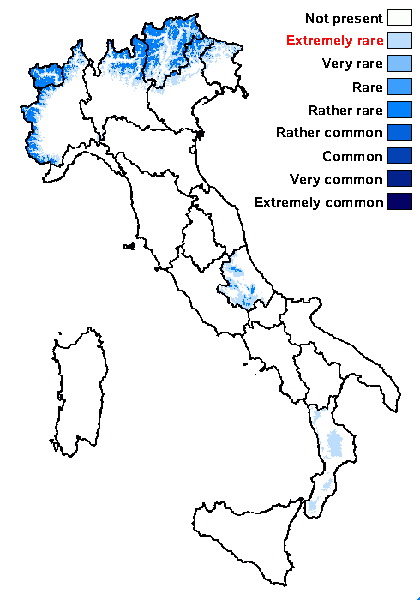
Predictive model
Herbarium samples
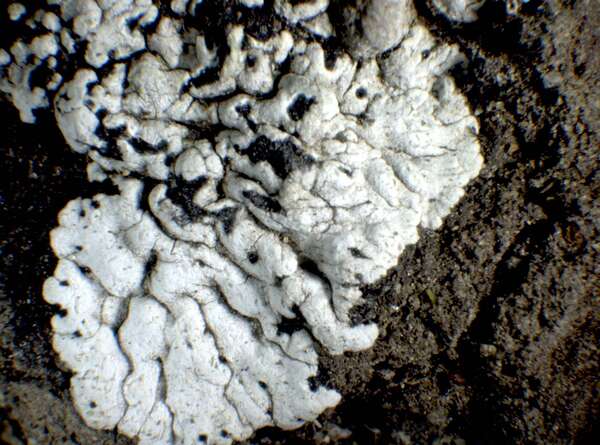

P.L. Nimis; Owner: Department of Life Sciences, University of Trieste
Herbarium: TSB (34514)
2002/01/17

Zschacke, H. (1934) Epigloeaceae, Verrucariaceae und Dermatocarpaceae. In: Dr. L. Rabenhorst‘s Kryptogamen-Flora, Band 9, Abt. 1, Teil 1. Akademische Verlagsgesellschaft, Leipzig, 695 pp. - Public Domain
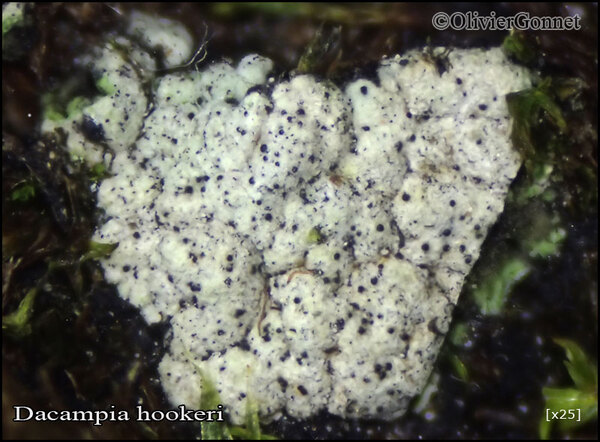
Courtesy Danièle et Olivier Gonnet - Source: https://www.afl-lichenologie.fr/Photos_AFL/Photos_AFL_D/Textes_D1/Dacampia_hookeri.htm
France, Canyon du crêt de la neige, alt. 1694 m - Lélex - Ain - on Solorina bispora
26/8/2017

Courtesy Danièle et Olivier Gonnet - Source: https://www.afl-lichenologie.fr/Photos_AFL/Photos_AFL_D/Textes_D1/Dacampia_hookeri.htm
France, Canyon du crêt de la neige, alt. 1694 m - Lélex - Ain - on Solorina bispora
26/8/2017
Growth form: Crustose
Substrata: soil, terricolous mosses, and plant debris
Photobiont: green algae other than Trentepohlia
Reproductive strategy: mainly sexual
Commonnes-rarity: (info)
Alpine belt: rather rare
Subalpine belt: rather common
Oromediterranean belt: extremely rare
Montane belt: extremely rare
Submediterranean belt: absent
Padanian area: absent
Humid submediterranean belt: absent
Humid mediterranean belt: absent
Dry mediterranean belt: absent

Predictive model
| Herbarium samples |


P.L. Nimis; Owner: Department of Life Sciences, University of Trieste
Herbarium: TSB (34514)
2002/01/17

Zschacke, H. (1934) Epigloeaceae, Verrucariaceae und Dermatocarpaceae. In: Dr. L. Rabenhorst‘s Kryptogamen-Flora, Band 9, Abt. 1, Teil 1. Akademische Verlagsgesellschaft, Leipzig, 695 pp. - Public Domain

Courtesy Danièle et Olivier Gonnet - Source: https://www.afl-lichenologie.fr/Photos_AFL/Photos_AFL_D/Textes_D1/Dacampia_hookeri.htm
France, Canyon du crêt de la neige, alt. 1694 m - Lélex - Ain - on Solorina bispora
26/8/2017

 INDEX FUNGORUM
INDEX FUNGORUM
 GBIF
GBIF
 DOLICHENS
DOLICHENS
